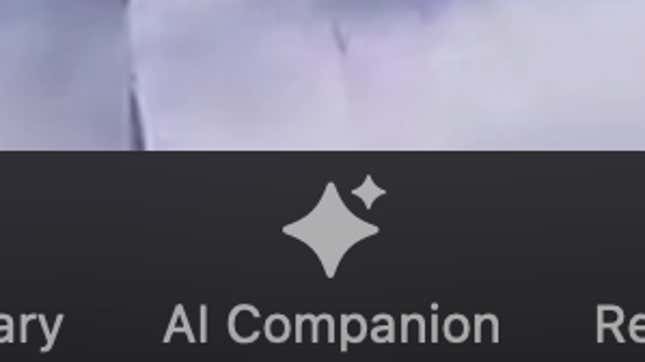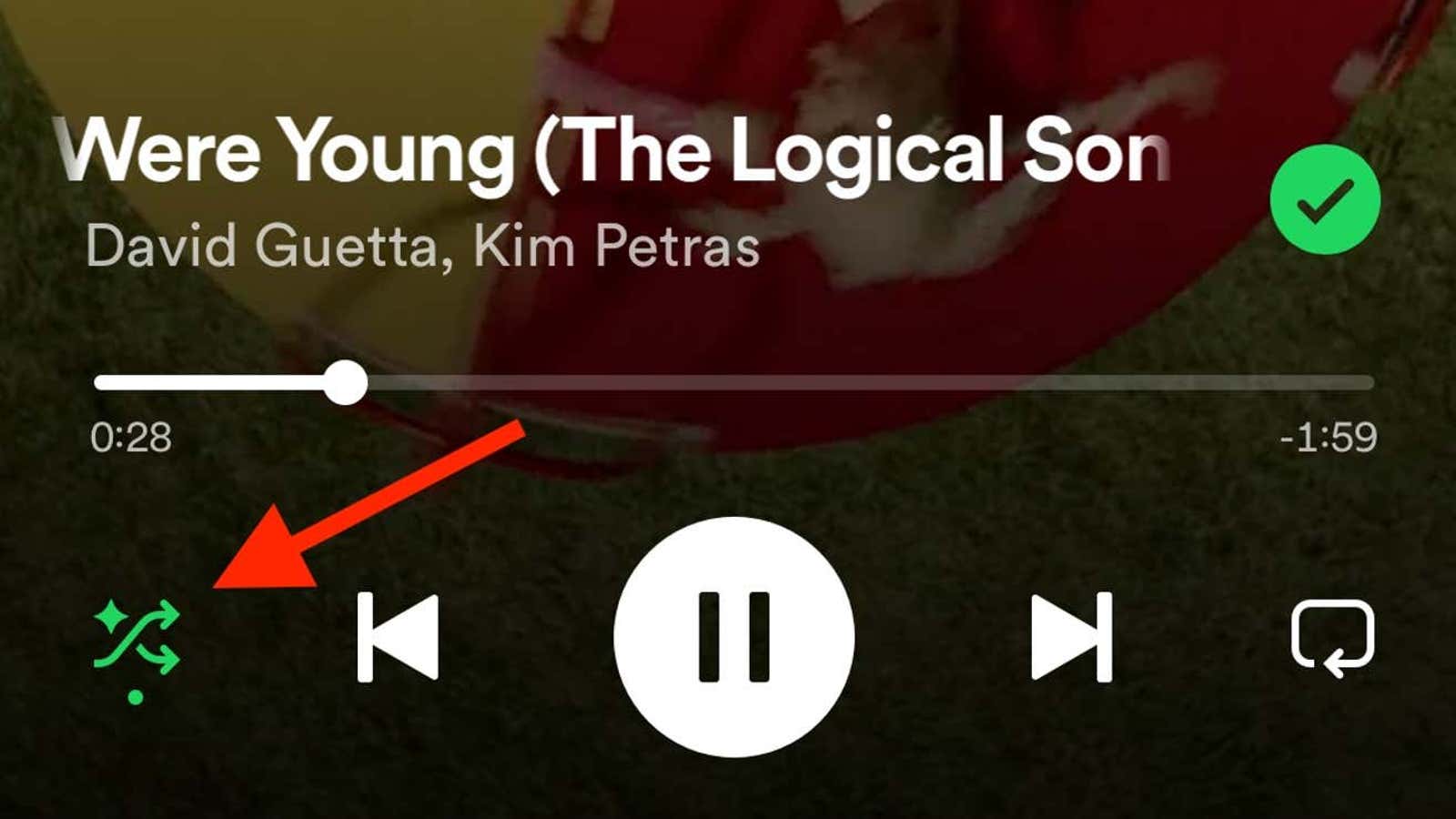Next time you shuffle your Spotify playlist or jump on a Zoom or Google video call, see whether you notice this: ✨. Or perhaps you have an eagle eye and have noticed it already, and are curious about what clicking on that button will do. Or maybe you’ve blindly clicked on it before without thinking twice about what the ✨ means, or why tech companies are using it to communicate the presence of artificial intelligence.

In March, Spotify rolled out a “smart shuffle” feature—indicated by the shuffle button overlaid with ✨—to provide users with AI-recommended songs that “match the vibe of an original playlist.” The company told Quartz that it is testing the sparkles icon to show how AI is changing the audio experience.

Meanwhile, Zoom has an AI assistant marked with a ✨. It’s a chat interface that sits on the side of the video screen and provides AI-backed actions like summing up meeting notes.
Google is using ✨ to communicate AI-generated backgrounds on its Google Meets video calls.
The list of companies working on AI products employing the sparkles emoji goes on: OpenAI and Google are using ✨, too.

In the relatively short history of emoji, sparkles have been used to express excitement and magic, said Jane Solomon, the senior emoji lexicographer at the emoji reference site Emojipedia. Branding new AI products with the ✨ emoji suggests that these tools are exciting and magical, which might encourage more people to test out the technology. “It can seem like magic if you don’t understand how it works,” Solomon said.
At the very least, it’s a subtle reference that’s unlikely to scare anyone who might otherwise be skeptical of AI technology (for example, the authors who have been filing lawsuits against generative AI companies because their work is being used to train AI models, without compensation or permission).
Consider the similarly disarming 🤗 emoji, the literal logo of Hugging Face, a company that provides a platform where developers collaborate on AI models, datasets, and applications. The hugging face emoji expresses openness and care, making it equally useful to ✨ in countering any pessimistic perceptions of AI.
If everything is AI, do you have to label it as AI?
When a technology is new, the words—or, in this case, the emoji—used to describe it are helpful in educating people about what it does, Solomon said. For instance, in the early days of the internet, terms like “Information Super Highway” and “World Wide Web” were commonly used to describe the concept but have since fallen out of use in favor of plain-old internet. Take it a step further: The capital “I” that was once commonly used in writing about the internet shifted to a lowercase “i” over time, in yet another indication of how commonplace the term has become. “There’s a dorkiness factor to capitalizing internet or email,” Solomon said. “It feels like it is not current.”
Maybe one day, capitalizing or even using the term AI will be a sign of dorkiness, but the ✨ will perhaps remain as a reminder that AI is there.
